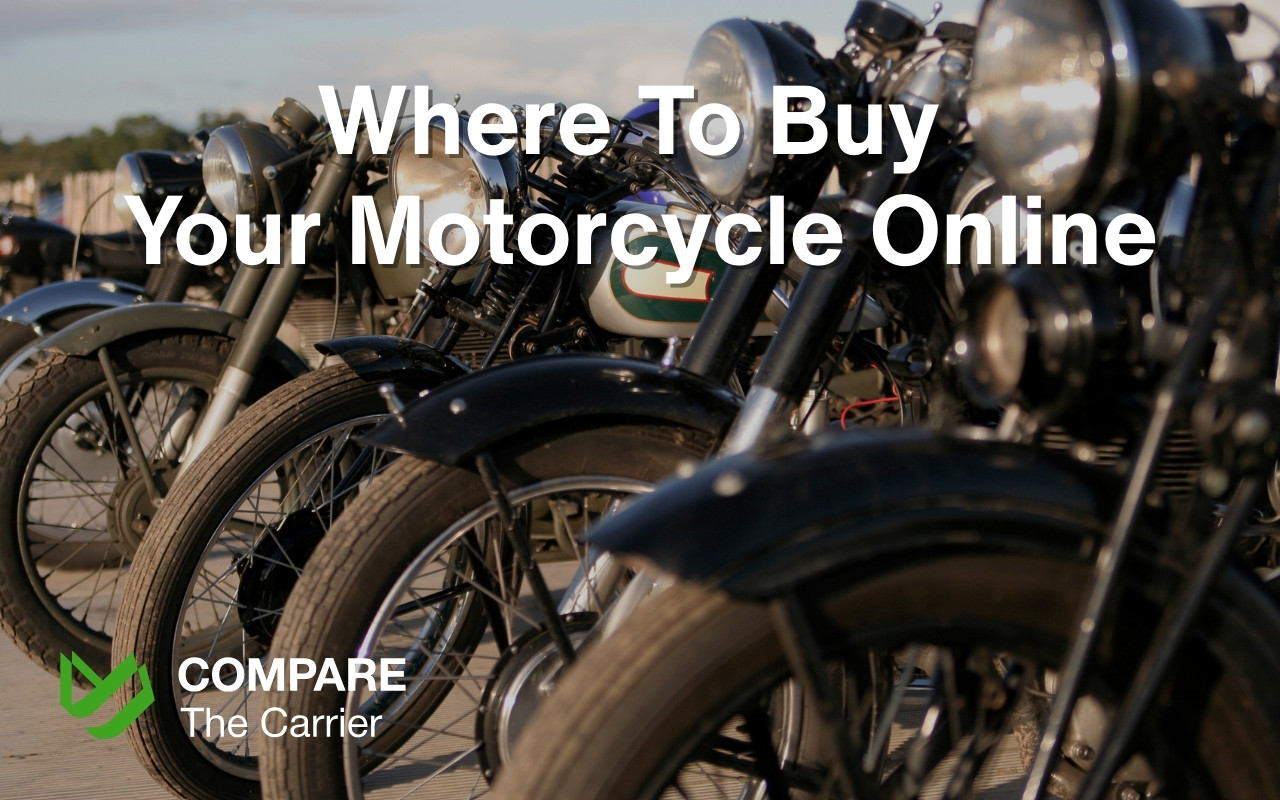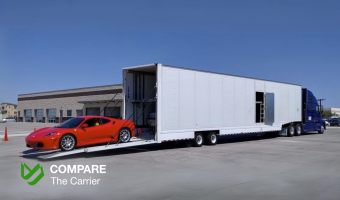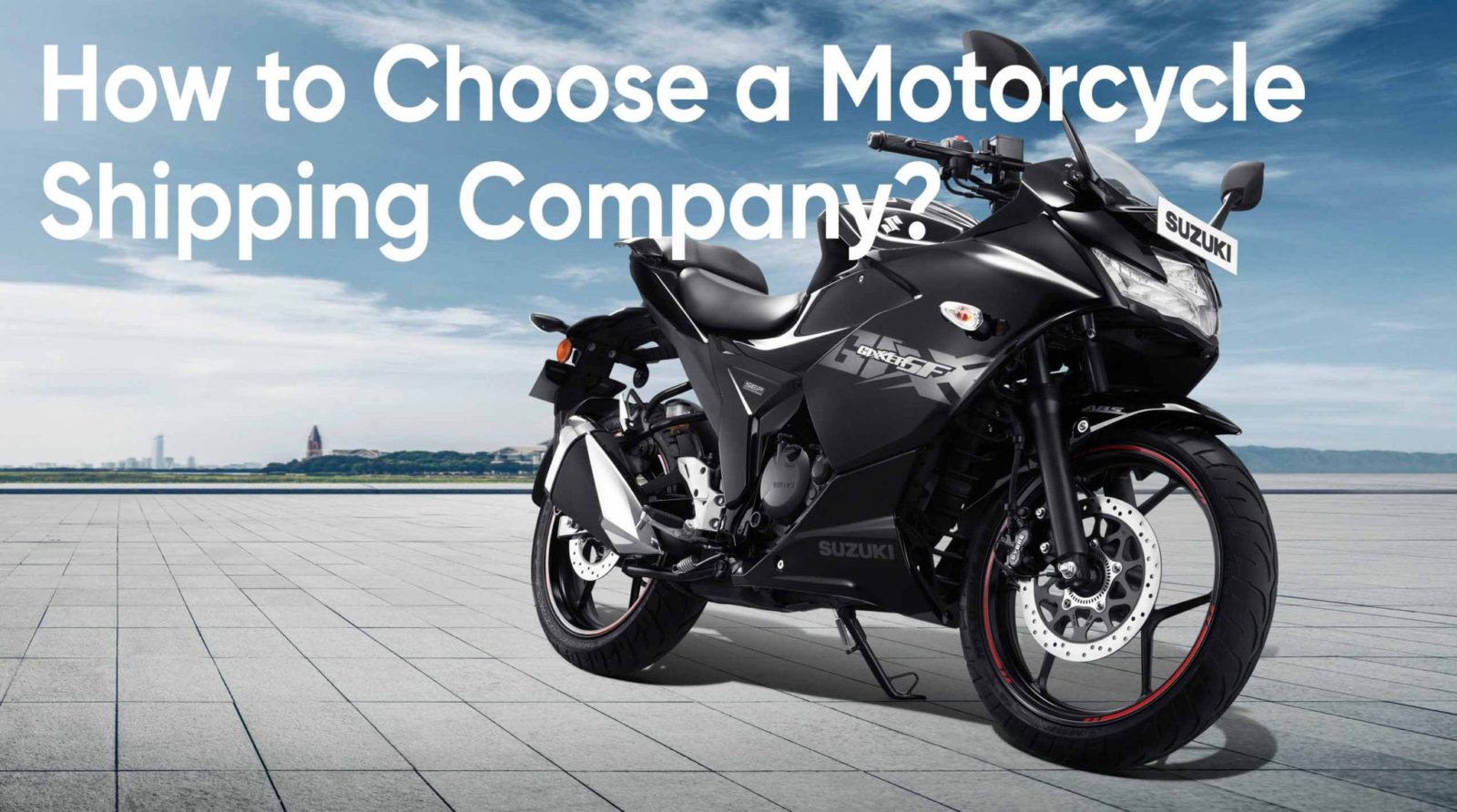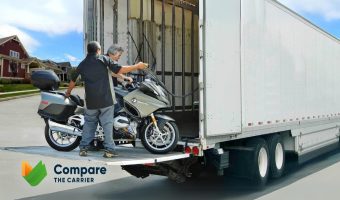Forget road-trip marathons to hunt down a bike — this guide will help you shop smarter, negotiate with confidence, and arrange safe delivery of your motorcycle right to your home. Let’s rev up and ride into the future of motorcycle buying!
Why Buy a Motorcycle Online?
Buying a motorcycle used to mean scouring local dealerships or classifieds and possibly settling for what’s nearby. Now, much like car buyers, motorcycle enthusiasts are embracing the online marketplace for its unmatched convenience and selection.

In 2023 alone, over 500,000 new motorcycles were sold in the U.S. , and a growing share of these buyers turned to online platforms to find exactly what they wanted at the right price.
Why are more riders shopping online? For one, the internet opens up a nationwide inventory that local shops can’t match. Whether you’re hunting for a rare vintage model or a specific trim of a new sport bike, chances are you’ll find it online.
Large sites like CycleTrader list over 160,000 motorcycles for sale at any time, from dealers and private sellers across the country, giving you an unprecedented variety of options in one place. This vast selection often leads to better deals too – with so many listings, sellers must price competitively. It’s no surprise that when you buy a motorcycle online, you usually get more choices and often lower prices than shopping locally.
Convenience is another huge factor. Instead of spending weekends dealership-hopping or chasing classified ads, buyers can browse listings 24/7 from their phone or laptop. Detailed photos, videos, and vehicle history reports are often available online, so you can do your homework upfront.
Many online-focused dealers even offer no-haggle pricing, sparing you the stress of negotiations and letting you purchase at a fair market price on your own terms. And while scams and misrepresentations can happen online, sticking with reputable platforms and being diligent greatly mitigates the risks (we’ll cover tips to stay safe later).
Finally, buying online gives you the power to shop beyond your zip code. Enthusiasts often find the exact bike they’ve been dreaming of hundreds or thousands of miles away. Rather than settling for what’s available nearby, you can snag that custom Harley from another state or an amazing deal on a used Yamaha that’s priced far lower in a different region.
Even factoring in shipping, you might come out ahead. In short, online motorcycle buying puts the entire U.S. market at your fingertips, so you don’t have to compromise on color, year, or specs.
As with any big purchase, there are trade-offs. You can’t physically inspect or test ride the bike beforehand in most cases, and you’ll need to exercise caution and due diligence (more on that in the Tips section). But for many riders, the advantages – nationwide selection, competitive pricing, convenience, and transparency – far outweigh the drawbacks.
By understanding how to vet sellers and arrange shipping, even long-distance, you can confidently buy a motorcycle online and have it delivered, ready to ride.
Comparing Top Online Motorcycle Buying Platforms
With so many websites and services to choose from, it can feel overwhelming to figure out where to buy a motorcycle online in the USA. From specialized motorcycle marketplaces to general classifieds and dealer networks, each platform offers a unique experience.
Below, we break down the leading online motorcycle buying platforms – how they work, what types of bikes you’ll find, delivery or pickup options, return policies, and standout features – so you can easily compare and decide the best place to buy your next bike.
Platform • Motorcycle Types • Buying Process
When deciding where to buy a motorcycle online in the USA, the first thing to compare is what type of motorcycles each platform specializes in and how the buying process works. Some marketplaces are geared toward private listings, while others act as full digital dealerships.
Here’s a breakdown of the motorcycle types and buying process across popular platforms:
| Platform | Motorcycle Types | Buying Process |
|---|---|---|
| RumbleOn | Primarily used motorcycles (all major brands); some ATVs/UTVs | Fully digital buy/sell/trade; instant trade-in offers; online financing |
| CycleTrader | New & used (all types; nationwide dealers & individuals) | Marketplace/classifieds; search and contact dealer/private seller to negotiate/purchase |
| Motorcycles on Autotrader | New & used (focus on dealer listings) | Marketplace affiliated with Autotrader; browse and contact dealer; some online financing tools |
| eBay Motors | New & used (dealers & private sellers; rare/vintage too) | Auctions or “Buy It Now”; bid/buy directly; built-in messaging |
| Craigslist | Used (local private sellers + some dealer posts) | Local classifieds; contact seller; in-person meet to inspect and pay |
| Facebook Marketplace | Used (mostly local private sellers, some dealers) | Social marketplace; message seller; arrange meet-up and payment |
| Cycle Soup | New & used (all categories; dealers & individuals) | Motorcycle marketplace; search and contact sellers; some buyer tools |
Platform • Delivery Options • Return Policy
Another critical factor is what happens after you’ve made the purchase. Some sellers offer limited delivery or pickup options, while others leave transport completely up to the buyer. Return policies also vary widely—dealers may allow short exchanges, while private sales are almost always final.
The following table compares the delivery and return policies of major online motorcycle platforms:
| Platform | Delivery Options | Return Policy |
|---|---|---|
| RumbleOn | Pick up at 50+ RideNow partner dealerships; home delivery sometimes available (fee, distance-based) | Short return period (limited window per terms) |
| CycleTrader | No integrated delivery; buyer coordinates pickup/shipping with seller | Varies by seller (dealers may allow short exchange; private sales typically “as is”) |
| Motorcycles on Autotrader | No direct delivery; pick up or arrange transport (dealers may assist locally) | Dealer-specific; most used sales as-is |
| eBay Motors | No built-in delivery; buyer arranges shipping/pickup (uShip quotes sometimes shown) | Typically final; covered by Vehicle Purchase Protection for fraud/misrep up to $100k |
| Craigslist | No delivery; buyer meets seller/picks up (or arranges own transport) | No returns (private party sales as-is) |
| Facebook Marketplace | No formal delivery; parties arrange exchange or buyer hires shipper | No returns (private transactions final) |
| Cycle Soup | No direct delivery; provides shipping calculator (actual shipping via third parties) | No unified policy; depends on seller (private sales typically no returns) |
Platform • Shipping/Transport • Unique Features
Finally, let’s look at how each platform handles shipping and what unique benefits they bring to the table. Most sites don’t provide integrated transport, which means buyers often rely on independent motorcycle shippers or services like Compare The Carrier.
But each marketplace still offers different features that make them stand out. Here’s a comparison of their shipping approach and standout features:
| Platform | Shipping/Transport | Unique Features |
|---|---|---|
| RumbleOn | Buyer usually arranges if not near partner dealership (RumbleOn can assist via network) | Omnichannel (online-to-offline), large dealer network, no-haggle offers, trade-in integration, financing options |
| CycleTrader | No platform shipping; buyers often use independent shippers for long-distance | Largest U.S. inventory (~160k listings); advanced filters; alerts; financing/insurance resources |
| Motorcycles on Autotrader | No platform shipping; independent shipping for out-of-area purchases | Trusted Autotrader brand; KBB value info; dealer ratings & reviews |
| eBay Motors | No platform shipping (shipping tab may show partner quotes; buyer contracts transporter) | Massive user base; Vehicle Purchase Protection; niche/rare bikes; seller ratings |
| Craigslist | No shipping service; buyer handles entirely | Free; huge local variety; no vetting (higher scam risk); city-by-city search |
| Facebook Marketplace | No platform shipping; buyer hires shipper if needed | Uses Facebook identities; easy local search; limited radius; potential privacy concerns |
| Cycle Soup | No in-house shipping; referral tools only; buyer books transport | User-friendly; financing options & insurance quotes; one-stop marketplace with added resources |
Spotlight on RumbleOn vs. CycleTrader vs. eBay Motors
To illustrate the range of online motorcycle buying experiences, let’s compare three of the most popular options side-by-side: RumbleOn, CycleTrader, and eBay Motors. Each represents a different approach to buying a bike online:
- RumbleOn – the closest thing to a “Carvana for motorcycles.” RumbleOn is an online dealer that buys and sells pre-owned bikes, offering instant cash offers for your trade and a no-haggle price on theirs. The platform provides a seamless digital transaction: you can get financed, sign paperwork, and arrange for pickup all online.
Since merging with RideNow (the nation’s largest brick-and-mortar powersports dealer network) to form an omnichannel powersports platform, RumbleOn lets you complete the purchase online then pick up the bike at a local partner dealership. They handle reconditioning and inspections, so quality is fairly consistent.
The downside? You’re limited to RumbleOn’s inventory of used bikes, and if you’re not near one of their locations, you’ll likely need to pay for shipping. - CycleTrader – the largest online classifieds site for motorcycles, analogous to Autotrader in the car world. CycleTrader isn’t a dealer; it’s a marketplace connecting buyers with thousands of independent sellers (both dealerships and individuals). The benefit here is sheer volume and variety – you can find almost any bike, from brand-new models at dealers to 40-year-old classics being sold by collectors.
You deal directly with the seller, so the buying process will often resemble a traditional sale (negotiating price, arranging payment and pickup). Prices can be very competitive because sellers are competing for attention among many listings, but you might also find some optimistic pricing from private sellers. There’s no unified vetting or guarantees – you’ll want to check the bike’s history and perhaps get an inspection done, as some listings could be misrepresented.
CycleTrader shines for selection and nationwide reach, but you as the buyer must do more legwork in terms of communication, due diligence, and logistics. It’s ideal for savvy shoppers who know what they want and are willing to arrange the details of the purchase and transport. - eBay Motors – a giant in online vehicle sales that brings both opportunity and complexity. On eBay, you’ll find everything from used Harleys being auctioned by individual owners to brand-new bikes listed by dealerships.
Auction-style listings mean you could snag a great deal if you’re the highest bidder, though it requires patience and strategy (and there’s always a chance you’ll be outbid at the last second). Many sellers also offer “Buy It Now” prices for instant purchase. eBay provides some protections – for example, verified Vehicle Purchase Protection up to $100,000 for fraud, and often sellers will include a vehicle history report or at least the VIN so you can run your own.
However, buying a motorcycle on eBay typically means buying it sight-unseen, so you’ll want to ask the seller plenty of questions and possibly hire a local mechanic to inspect it if it’s a costly purchase. Shipping is not handled by eBay; you’ll either pick up the bike yourself or hire a motorcycle shipper. The appeal of eBay is that you can find unique or hard-to-find models nationwide and potentially get a bargain, but it requires caution – stick to sellers with strong ratings, and be very clear on the condition of the bike.
Unlike a focused motorcycle site, eBay’s audience is broader, so sometimes motorcycles listed there get less attention, which could be your chance to win an auction at a good price.
Each of these platforms – RumbleOn’s all-in-one convenience, CycleTrader’s vast marketplace, and eBay’s auction dynamism – caters to different buyer preferences. Think about whether you value a streamlined process (RumbleOn), maximum choice (CycleTrader), or the thrill of the auction and possibly lower prices (eBay). Often, buyers will browse multiple sites to cover all the bases.
The good news is, no matter where you find your bike, you can always arrange to have it delivered (which we’ll cover next).
In fact, many savvy buyers use a combo approach: locate the perfect bike online, then use an independent shipper to bring it home.
Key Factors When Comparing Online Motorcycle Buying Platforms
Choosing the right platform to buy your motorcycle isn’t just about finding the bike itself; it’s also about finding a service that matches your needs and comfort level. As you explore where to buy a motorcycle online, keep these key factors in mind:
1. Inventory Size and Type
Look at the volume and variety of bikes on the platform. Are you after a brand-new sportbike, a specific used cruiser, or maybe a certified pre-owned touring bike?
- Marketplaces like CycleTrader and Cycle Soup typically have the largest inventories, aggregating listings from thousands of dealerships and private sellers nationwide. This is ideal if you’re seeking something very specific or want to compare many similar listings (e.g. dozens of Honda Gold Wings across the country). You’ll find everything from common models to niche finds in one search.
- Online retailers/dealers such as RumbleOn have a more curated inventory – usually limited to used motorcycles they have acquired and reconditioned. While smaller in selection, these inventories are often standardized (e.g. each bike is inspected and comes with certain assurances). If you’re not picky about having every option and prefer quality over quantity, this can suffice. Just note that RumbleOn’s inventory skews toward popular makes/models and may not include very old or very rare bikes.
- General platforms like eBay or Facebook Marketplace also have a broad array, but quality can be hit or miss. There might be lots of listings, but some could be duplicates or less relevant (e.g. project bikes in pieces). Consider if the platform specializes in motorcycles or if bikes are just a category – dedicated bike sites often cater better to motorcycle buyers.
In short, if selection is your priority, choose a platform with a huge inventory across the USA. If you want something more filtered (like only low-mileage bikes with some guarantee), a direct retailer or dealer network might be better.
2. Pricing Model and Fees
Understand how the platform handles pricing and what extra fees you might encounter. The “sticker price” of the bike is just one part of the cost equation when buying online.
- Some services offer fixed, no-haggle pricing. For example, RumbleOn will give you a set price for a bike (much like CarMax does for cars). This price usually doesn’t include tax or registration, but it’s a take-it-or-leave-it number on the bike itself. No-haggle can simplify things and ensure you’re not overpaying versus market value.
- Marketplaces and classifieds often have prices set by individual sellers. These may be negotiable. Private sellers on CycleTrader, Craigslist, etc., might list a higher price expecting some negotiation. Don’t be afraid to politely negotiate when dealing with an individual. Dealers listing on these platforms might be less flexible on price, but you can sometimes negotiate added perks (like new tires or waived doc fees).
- Watch out for additional fees that can creep in:
- Dealership documentation fees or prep fees: If you buy from a dealer (via CycleTrader or Autotrader), they may add administrative fees, usually a few hundred dollars.
- Auction fees: On eBay, there’s typically no fee for the buyer beyond the sale price, but some vehicle auctions might require a deposit via PayPal, etc.
- Transportation fees: If a platform or dealer offers to ship the bike to you, that will usually cost extra (we’ll cover shipping costs later).
- Sales tax and title/registration: These are not included in online prices. You’ll have to pay your state’s sales tax and DMV fees when registering the bike, whether the dealer handles it or you do it independently.
- Dealership documentation fees or prep fees: If you buy from a dealer (via CycleTrader or Autotrader), they may add administrative fees, usually a few hundred dollars.
Transparency varies. Reputable platforms and dealers will be up front about fees (and some states cap doc fees by law). Private sales generally have no “fees” – you just pay the agreed price, then handle tax/registration yourself. Always ask for a breakdown of any total price from a dealer so you know exactly what you’re paying for.
3. Financing Options
Consider how you’ll pay for the motorcycle and whether the platform makes financing easy.
- Integrated Financing: Many major online platforms offer built-in financing applications. RumbleOn, for instance, lets you apply for a loan during the online checkout process. If you’re buying from a dealership via Autotrader or CycleTrader, the dealer can usually take your credit app online or over email/fax. Some even have promotional rates (especially on new bikes, manufacturers may offer low APR deals through dealers).
- Third-Party Lenders: If you find a bike from a private seller (say on Craigslist or a CycleTrader private listing), you might need to arrange financing on your own. Banks and credit unions do offer motorcycle loans, though terms might be a bit stricter than auto loans (shorter terms, slightly higher interest typically). It’s wise to get pre-approved with a lender before shopping, so you know your budget and can act fast when you find the right bike.
- Flexibility: Ensure the platform doesn’t force you into their financing. The best platforms let you pay however – cash, your own loan, or their financing. For example, you might get a great rate from your credit union; you should be able to use that loan to pay for the bike you win on eBay or the one you negotiated on CycleTrader. Check that a dealer will accept an outside lender’s check or that an individual seller is okay waiting for your loan to fund (usually not an issue if you communicate).
- Deposits: Some online purchases require a small deposit to hold the bike (especially auctions or if a dealer is taking it off the market for you). Know whether that deposit is refundable if the deal falls through.
In summary, if financing is needed, favor platforms that streamline the loan process or at least provide info on financing. And always compare any financing offer from a platform with outside options – you might find a better deal on your own.
4. Trade-Ins
Do you have an old motorcycle you want to sell or trade? The ease of handling a trade-in online varies by platform:
- RumbleOn stands out here – they specialize in buying bikes and take trade-ins entirely online. You input your current bike’s details, and RumbleOn gives you a cash offer that you can apply toward the purchase of another bike from them. They’ll even pick up your old motorcycle. This can be extremely convenient if you’re looking to swap rides, as it consolidates the process.
- Traditional dealerships (which you might connect with via CycleTrader or Autotrader) also accept trade-ins. If you’re buying a used or new bike from a dealer, you can usually get an appraisal on your old bike. Sometimes you can start this online by sending photos or filling a form, but often the final trade-in offer will be given after an in-person inspection. If the dealer is far away, be prepared that the trade-in might be handled when you go to pick up your new bike (or you might opt to sell your old bike locally instead).
- Private sellers typically won’t take a trade directly. However, there’s nothing stopping two individuals from agreeing to swap bikes plus cash one way or the other – but that’s rare and complicated. If you’re dealing with a private party on Craigslist or Facebook, assume it’s a cash sale and you’ll handle selling your old motorcycle separately.
One strategy if you can’t trade in to the seller: use a service like RumbleOn or a local dealer to sell your old bike for cash, then use those funds to buy the new one. Some online buyers will give you a quick sale on your bike even if you’re not buying from them.
In any case, if a trade-in is important for convenience or tax advantages (in some states, trading in can reduce the sales tax you pay on the new vehicle), lean toward platforms that facilitate it. Otherwise, plan to sell your old motorcycle independently.
5. Inspection Period and Return Policy
Because buying a motorcycle online often means you don’t get to see the bike in person until it’s delivered, the post-purchase inspection and possible return option are critical safeties.
- Money-Back Guarantees: In the car world, Carvana and CarMax offer a 7-day or more return policy. In the motorcycle world, this is less common, but some online-focused sellers are starting to offer short return periods. For example, RumbleOn’s terms suggest there is a Return Period during which you can get a refund, though you should clarify the length (it might be around 3 days). If you’re using an online retailer that has a return policy, take advantage of that window – inspect and even get the bike checked by a local mechanic within that period.
- Dealerships generally sell used motorcycles “as is,” especially if out of state. Some big dealers might allow an exchange or short return on a used bike as a gesture of goodwill, but assume you won’t be able to return it unless explicitly stated. New bikes usually come with a manufacturer warranty but not a return policy.
- Private Sales (Craigslist, etc.) have no returns. Once you hand over money and take the bike, it’s yours. That’s why doing an inspection before handing over cash is so important in private transactions. If you’re traveling to pick up a bike, try to inspect it in person or hire a local mechanic to do so on your behalf. For distant deals, you could use an escrow service that allows an inspection period before funds are released, but many private sellers may not be familiar with that.
- Platform Buyer Protection: While not a “return” policy, note that eBay’s Vehicle Purchase Protection can reimburse you if the bike arrives significantly not as described (e.g., it was advertised as running but arrives with a seized engine). This is a safety net for extreme cases of fraud, not a satisfaction guarantee.
In essence, know before you buy if you’ll have any recourse to return the bike. If you do get a return window, use it wisely – check everything on the motorcycle and do a thorough test ride. If no return policy, then do all inspections before completing the sale.
6. Buyer Protection and Bike Condition
What assurances does the platform or seller give about the condition and history of the motorcycle? Trust is key when you can’t see the bike yourself initially.
- Vehicle History Reports: Does the platform provide one or facilitate it? Many dealership listings on CycleTrader or Autotrader will mention if a bike is clean titled, one-owner, etc., and might offer a CARFAX or VIN check on request. eBay often encourages sellers to include the VIN so buyers can run a report. Always ask for or obtain the VIN and run a history report (CARFAX or CycleVIN) to check for accidents, salvage title, theft record, or odometer issues before you buy.
- Inspection and Reconditioning: If you buy via an online retailer like RumbleOn, the bike likely has gone through some inspection and refurbishing process. RumbleOn and similar will usually fix mechanical issues and detail the bike before sale – their reputation is on the line, so they try to sell roadworthy bikes. They might list any notable flaws in the description. On pure marketplaces, the condition statements are only as trustworthy as the seller. Look for detailed descriptions and lots of photos. If a listing is sparse on details, be cautious – you may need to request more info.
- Warranties: New motorcycles come with manufacturer warranties (usually 1-2 years, unlimited mileage for street bikes). Used motorcycles sold by dealers might come with a short dealer warranty or the option to buy an extended warranty or service plan. For instance, a certified pre-owned bike from a brand dealer (like a Harley Certified program) might include a 6-month limited warranty. Online private sales, of course, have no warranty (it’s “as-is”). Consider your risk tolerance – if you’re buying a late-model bike, you might still have factory warranty left. If not, and it’s a high-end purchase, you might look into third-party warranty plans if that gives peace of mind.
- Platform Rules and Support: Platforms like eBay and Facebook have rules prohibiting fraudulent listings, and they may ban sellers who are reported for scamming. That helps maintain a baseline of safety. Additionally, seller ratings/reviews can tell you a lot. On eBay, check the seller’s feedback (someone with hundreds of sales at near 100% positive is a safer bet than a zero-feedback seller). On CycleTrader, if it’s a dealer, look up that dealer’s Google or BBB reviews outside the platform. Facebook Marketplace shows you if you have mutual friends or if the seller has an established profile, which can add some confidence.
Ultimately, buying online requires some extra diligence. Use all tools at your disposal: history reports, asking for maintenance records, plenty of photos (ask for specific shots if something is unclear), and even video calls to view the bike “live” if the seller is willing. A trustworthy seller will understand and accommodate reasonable requests for information – if they don’t, that’s a red flag.
7. Delivery Options and Geography
How will you actually get the motorcycle after purchase, and does the platform restrict sales based on location?
- Local Radius Delivery: A few platforms or dealers offer limited delivery services. For example, some local dealerships will deliver a bike within, say, 50-100 miles for free or a fee. RumbleOn, through its RideNow network, might transfer the bike to a partner store near you at no extra cost (if you live within their network coverage). But if you’re outside their reach, they might have to ship it commercially, which could add cost. Always clarify what delivery (if any) is included in the deal.
- Marketplace Sales: If you found the bike on a marketplace (CycleTrader, etc.), you’ll need to discuss with the seller how to get it. Many out-of-state buyers either drive/fly to pick up the bike and ride it home or hire a motorcycle shipping company. There are professional transporters that specialize in motorcycles (enclosed trailers or specialized pallets). We’ll discuss independent shipping soon – it’s a common solution.
- Private Local Sales: Platforms like Craigslist and FB Marketplace assume you’ll meet locally to exchange. If you end up buying a local bike, you might just trailer it or ride it back from the meetup point. For non-local deals on these platforms (less common, but it happens if someone finds your listing from far away), you again would turn to an independent shipper – the platform itself won’t assist.
- Geographic Limitations: Some platforms might only operate in certain areas. For instance, a few online dealership sites only sell to neighboring states due to franchise laws or emissions regulations. Check if there are any restrictions. (One example from the car side was Amazon Autos only doing certain cities – for motorcycles, most platforms are nationwide, but double-check anything in fine print like “ships to contiguous U.S. only” if you’re in Alaska/Hawaii).
- Timing: If you are arranging transport, factor in that it can take a week or two for a bike to be picked up and delivered, depending on distance and carrier availability. Platforms won’t usually hold a bike for you indefinitely, so coordinate purchase timing with shipping plans.
In summary, plan the logistics once you’ve chosen your bike. If the platform doesn’t offer delivery (and most don’t beyond local range), you’ll either pick it up yourself or use an independent shipper. Luckily, even if you buy from a private seller across the country, there are plenty of transport options to get your new ride home (see the next section). Just be sure to include that in your budget and timeline.
8. Customer Support and Reviews
What help is available if you hit a snag, and what do other buyers say about their experience on the platform?
- Customer Support Channels: If you’re using an online service or dealer, check for a customer service line or chat. RumbleOn, for example, has support to guide you through the buying process or address issues like paperwork or delivery hiccups. Platforms like eBay have robust buyer support and dispute resolution systems (though not specific to motorcycles, they can mediate issues). If a platform has readily available support (phone, email, live chat), that’s a plus – it can smooth out any confusion with titles, payments, etc.
- Community & Forum Feedback: Riders often share their experiences on motorcycle forums or Reddit about various sites. A quick search can reveal common praises or complaints. For instance, some users report great deals on Craigslist but warn about scam attempts (fake escrow services, etc.), while others discuss selling to RumbleOn as hassle-free but perhaps not top dollar. Taking a moment to see what the community says can validate your choice or highlight what to watch out for.
- Independent Ratings: Look at the platform or company’s Better Business Bureau (BBB) rating or Trustpilot reviews. For example, eBay has decades of trust built up, but newer companies like RumbleOn might have mixed reviews regarding their customer service or post-sale follow-up. High satisfaction rates among online buyers are a good sign that the platform is doing things right. (In the online car buying world, satisfaction reached around 78% in recent surveys – while we don’t have a specific stat for motorcycles, increased adoption suggests buyers are generally happy as long as they follow best practices).
- Scam Policies: Does the platform have measures against fraud? Sites that verify seller identities or use escrow for payments offer more peace of mind. For example, some escrow services can be used for eBay motors sales (at buyer’s cost) to hold funds until the bike is delivered. Knowing these options or protections exist can influence which platform you trust for larger transactions.

In essence, reputation matters. A platform or seller with a solid track record gives you confidence. Take advantage of any support offered – don’t hesitate to contact customer service with questions about the process. And if something feels off during communications with a seller (e.g., they avoid video calls or rush you to pay via wire transfer outside of official channels), reach out for help or walk away. A good platform will have your back or at least provide guidance on how to transact safely.
By keeping these factors in mind, you can compare online motorcycle buying platforms not just on the bikes they have listed, but on the overall experience and security they provide. The goal is to find your perfect bike and have a smooth buying journey from click to delivery.
When and Why to Use Independent Motorcycle Shipping
Buying a motorcycle online is one half of the equation – the other half is getting that bike from the seller’s garage to yours. Many platforms offer convenient pickup options, but they may not cover every scenario, especially if you and the seller are far apart. There are specific situations where arranging independent motorcycle transport becomes not just a convenience, but a necessity, even after you’ve sealed the deal on the purchase.
Platform or dealer delivery services, when they exist, tend to be limited by distance and location. If you live within a certain radius of the seller (for example, within a metro area or a neighboring state), a dealership might truck the bike over to you or RumbleOn might transfer it to a nearby outlet. But what if your new motorcycle is sitting 1,500 miles away?
Driving out to get it might be impractical for you, and the seller’s delivery range likely ends long before that. In fact, riders are increasingly turning to professional shippers for long distances – in 2024, over 500,000 motorcycles were shipped to events across the country (rallies and such check more here), a number expected to rise as more riders realize they can ship their bikes for convenience. The same logic applies to purchases: shipping can be a safe and efficient way to transport a bike across states without putting wear and tear on it.
Here are common scenarios where you’ll want to consider using an independent motorcycle shipping service:
- Buying from a Distant Location: This is the most frequent reason. If you found your dream bike online and it’s on the other side of the country, riding it back might not be feasible (especially if it’s used and you’re not sure of its road-trip readiness, or if it’s a sport bike that isn’t comfy for multi-day rides). Shipping the motorcycle is often safer and can actually save money when you factor in the cost of a fly-and-ride (plane tickets, fuel, hotels, time off work). You avoid racking up mileage and potential mechanical issues from a long trip home.
- Purchasing from a Private Seller: Marketplaces like Facebook and Craigslist connect you directly with individuals who generally do not offer delivery. If the seller isn’t local, you are 100% responsible for getting that bike. After payment, you’ll have to either go get it or hire a transporter. Many buyers choose to hire a licensed motorcycle transporter to pick the bike up from the seller’s driveway and bring it to them. This takes coordination (you have to work out pickup times with the seller), but most private sellers are agreeable if you handle the legwork.
- Dealership Limitations: Even when buying from a dealership through CycleTrader or eBay, nationwide delivery isn’t guaranteed. Some dealers might say, “We can ship anywhere!” but when you ask, the quote could be exorbitant since they’d outsource it. Other dealers simply won’t handle shipping beyond a certain distance because of the hassle or liability. They might prefer you to arrange it. If the dealer you’re buying from is, say, 800 miles away and doesn’t deliver that far, you’ll be arranging independent shipping. Additionally, if they do offer shipping, compare the cost – sometimes the dealer’s quoted delivery fee is much higher than what you can book on your own.
- Specialty or Classic Motorcycles: If you’ve purchased a rare vintage motorcycle or a high-value custom (perhaps through an auction site like Bring a Trailer or a specialty forum), you’ll likely want the extra care of professional shipping. Not all platform delivery options (on the few that have them) will offer enclosed transport, but independent carriers do. Using an enclosed trailer protects that pristine 1940s Indian Chief or that custom show bike from weather, road debris, or prying eyes. When dealing with something irreplaceable or delicate, a specialized motorcycle shipper is the way to go.
- Relocation or Moving: Sometimes the situation is reversed – you bought a bike locally, but then you’re moving to a new state shortly after. Rather than riding the bike to your new home (which might not be possible if you’re already driving a car or truck during the move), it’s easier to ship the motorcycle. Moving is stressful enough; having your motorcycle transported can be one less thing to worry about during a big relocation.
- Saving Time and Hassle: Not everyone has the flexibility to drop everything and make a cross-country bike retrieval trip. Shipping can save you a ton of time. You can continue with your daily life while professionals handle the door-to-door transport. It also saves your bike from the wear of a long ride and spares you the risk of accidents or breakdowns en route. Many riders choose to ship a new purchase to avoid putting the first thousand miles on it in one marathon slog.
In all these cases, the online platform’s integrated delivery either isn’t available or isn’t ideal. That’s where you’ll need to find a licensed and insured motorcycle transport company on your own. Fortunately, the industry has many reliable carriers, and services like Compare The Carrier can help you compare motorcycle shipping quotes and options easily. By going independent, you ensure your new motorcycle will make it home on your terms: when you want, how you want (open or enclosed trailer), and at a competitive price.
Next, we’ll discuss how to leverage Compare The Carrier to make this step effortless, so that once you’ve clicked “Buy” on your bike, the journey from the seller’s garage to your garage is smooth cruising.
Compare The Carrier – The Best Way to Ship Your Motorcycle Bought Online
So you’ve finally found the bike – whether it’s through an online marketplace or a direct seller, you sealed the deal. Now comes the question of getting that machine safely home. As we’ve seen, sorting out transport is often the buyer’s responsibility when it comes to online purchases. This is where Compare The Carrier becomes your ultimate wingman in the process.
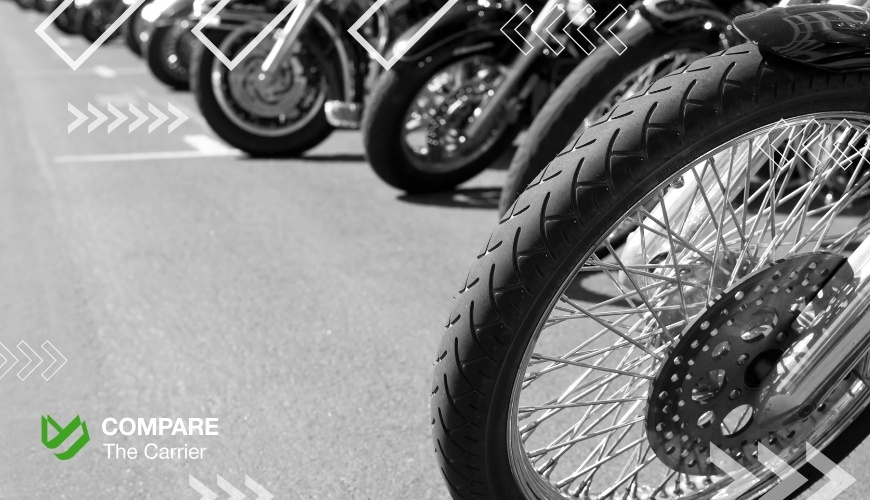
Compare The Carrier is a platform specifically designed to help you compare shipping quotes for all kinds of vehicles – including motorcycles – from a network of vetted transport companies. We understand that after going through the work of finding and buying a bike online, the last thing you want is to struggle with finding a trustworthy shipper. Our goal is to simplify motorcycle shipping the same way online platforms simplified motorcycle shopping – saving you time, money, and giving you peace of mind.
Here’s how Compare The Carrier makes shipping your newly bought motorcycle a breeze:
- Compare Multiple Quotes at Once: Instead of contacting carriers one by one (and repeating your bike’s details each time), you can submit one request on Compare The Carrier and get back quotes from various licensed transporters. This allows you to evaluate prices and services side-by-side. You’ll see which company offers the best rate, fastest timeline, or enclosed vs. open transport, all in one place. It ensures you find a cost-effective solution without compromising quality for moving your motorcycle.
- Vetted, Reliable Carriers: We only work with licensed and insured motorcycle shippers, so you don’t have to worry about fly-by-night operators. Shipping a motorcycle requires proper equipment (like soft ties, wheel chocks or crates) and experience. Compare The Carrier’s network consists of professionals who know how to handle bikes – whether it’s a large touring bike or a small dirt bike – with care. By choosing from our vetted list, you avoid common issues and scams in vehicle transport. Your bike is a prized possession; we help ensure it’s in safe hands.
- Transparent Reviews and Information: Through our platform, you can often see customer reviews and ratings for the carriers bidding for your job. This transparency means you can make an informed decision beyond just price – the cheapest quote isn’t worth it if the shipper has poor communication or delivery track record. We encourage you to compare not just dollars, but also reputation. With Compare The Carrier, everything is out in the open for you to judge.
- Time and Effort Savings: Using Compare The Carrier can save you hours of research and calls. In one place, you’ve effectively shopped around. No need to juggle between emails from different carriers or worry you might have missed a better option. Also, our platform is available 24/7, so you can initiate the process the moment you finish your bike purchase. Many buyers get quotes within minutes or hours, allowing them to schedule pickup quickly and avoid storage fees or overstaying a welcome if the bike is at a seller’s place. We essentially bring the carriers to you, so you can focus on the excitement of your new motorcycle rather than the logistics.
- Choice of Transport Options: Through Compare The Carrier, you can specify if you want open transport or enclosed transport, expedited shipping, or if the bike is not running (which some carriers need to know as it requires special handling). By outlining your needs, you’ll get quotes tailored to exactly what you want. This beats getting a generic quote and then finding out there’s an extra charge for enclosed shipping or a winch for a non-runner. The result is no surprises – you choose exactly the level of service you need.
Whether you scored a bike from a major online retailer, won an auction on eBay, or negotiated a deal on a forum or Facebook group, Compare The Carrier is your go-to tool to arrange transport. We’re essentially the “shipping department” that those buying platforms lack. And we’re on your side – helping you find the best deal from trustworthy carriers rather than having to take whatever one option is given.
Ready to get your newly bought motorcycle on the road to you? In just a few clicks, you can use Compare The Carrier to line up a transporter and know your bike is on its way safely and affordably.
Get Instant Quotes from Licensed Motorcycle Transport Companies now →
Need a quick ballpark cost? Try our Auto Transport Calculator to estimate your motorcycle shipping cost based on distance and bike type.
Tips for a Smooth Online Motorcycle Purchase
Buying a motorcycle online can be rewarding — you get choice, convenience, and often better deals. But to make sure everything goes smoothly from click to delivery, keep these essentials in mind:
- Do Your Homework: Don’t rely only on the listing. Run a VIN check, ask for service records, and read seller reviews. If shipping, stick with vetted carriers like Compare The Carrier to avoid scams.
- Know the Full Cost: Factor in sale price, taxes, fees, insurance, and transport. A clear breakdown prevents last-minute surprises.
- Secure Financing Early: Pre-approval from a bank or credit union gives you a budget and negotiating power.
- Check Return/Inspection Options: If there’s a short return window, inspect the bike immediately—or hire a local mechanic to do it.
- Plan Shipping Ahead: Get quotes through Compare The Carrier as soon as you close the deal. Coordinate with the seller so the bike is ready for pickup.
- Pay Safely: Use escrow or verified business accounts. Avoid gift cards, overpayment tricks, or shady payment links.
- Document Everything: Save messages, take photos at pickup and delivery, and check the Bill of Lading if shipped.
- Prep for Transport: Remove accessories, lower fuel to ¼ tank, disable alarms, and clean the bike so condition is easy to verify.
- Stay in Touch: Get the driver’s contact, track progress, and inspect carefully before signing at delivery.
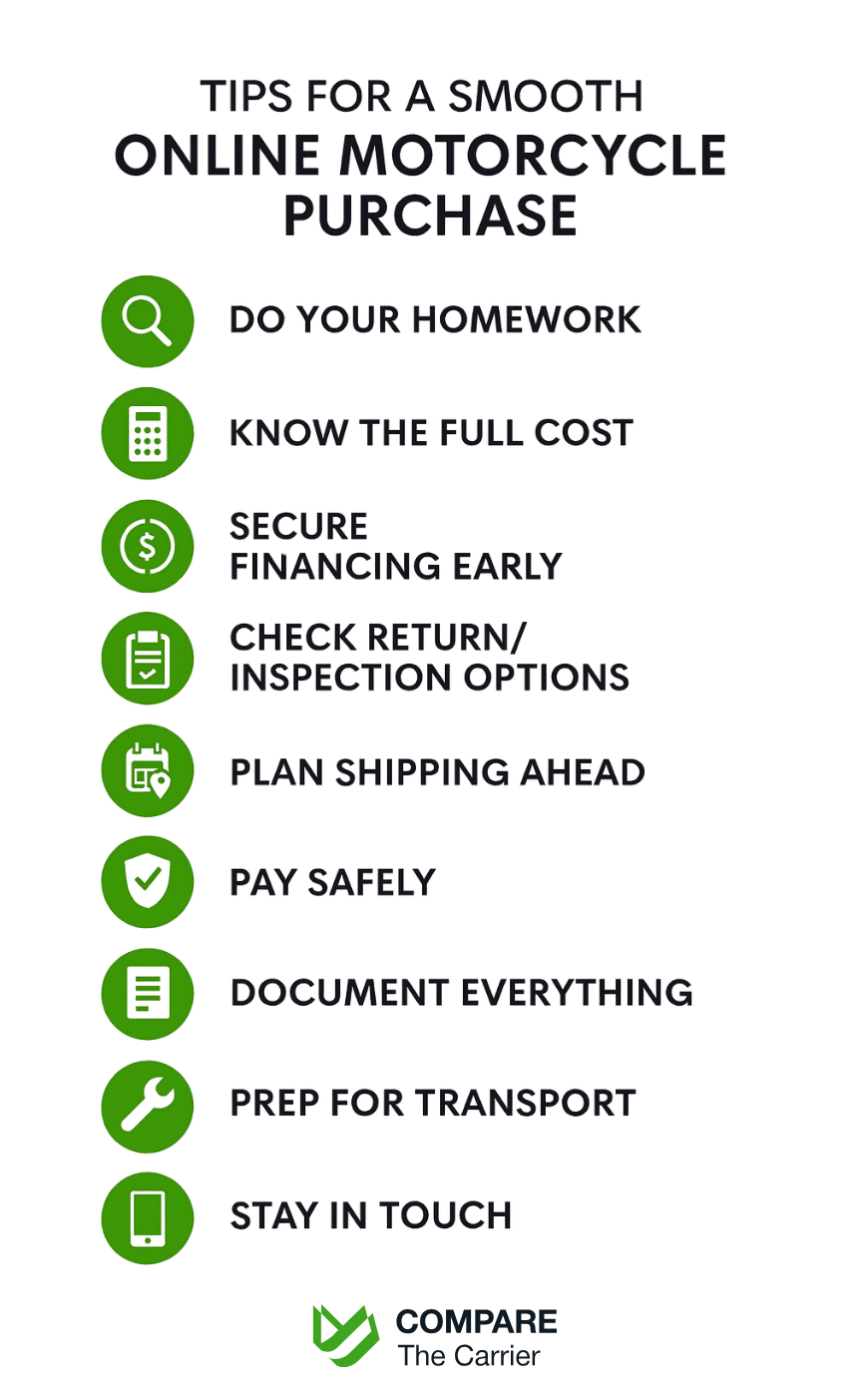
By staying proactive and informed, you’ll navigate the digital motorcycle marketplace like a pro. Combine the reach of online platforms with trusted delivery through Compare The Carrier, and your dream bike can roll into your garage no matter where it’s located.
Conclusion: Navigating Online Motorcycle Buying and Shipping in 2025
Online motorcycle buying has opened up a world of choice and convenience. Riders can now browse nationwide listings, compare prices, and often score deals that local shopping can’t match. Whether you want a seamless purchase from RumbleOn, maximum selection on CycleTrader or eBay, or a fair local deal via Facebook or Craigslist, there’s a platform for every buyer.
But buying the bike is only step one—you still need it delivered. Most platforms offer limited delivery, which is why so many buyers turn to Compare The Carrier. With access to licensed, vetted carriers and instant quotes, it’s the easiest way to get your new motorcycle shipped safely and affordably across the U.S.
Today, you’re not limited to what’s within riding distance — you can truly shop coast to coast. Find your dream bike online, then let Compare The Carrier handle the final leg so it arrives at your doorstep ready to ride.
Ready to ship your motorcycle? — Get Instant Motorcycle Shipping Quotes.
Curious about costs? Try our — Auto Transport Cost Calculator.
FAQ
Is buying a motorcycle from an online platform safe?
Yes, buying a motorcycle online can be safe if you take the proper precautions and use reputable platforms. Established sites like CycleTrader, Autotrader, and eBay Motors have millions of users and built-in safeguards (for example, eBay’s purchase protection and verified seller feedback) that instill confidence.
How does financing work when I buy motorcycle online USA?
Financing an online motorcycle purchase works much like financing a bike from a dealership, with a few differences in execution. If you’re buying through a platform that has a built-in financing option (like RumbleOn or a dealer listing on Autotrader), you can usually fill out a credit application online. They’ll connect you with lending partners or manufacturer financing if it’s a new bike.
Alternatively, you can secure your own financing: for example, get a motorcycle loan from your bank or credit union before you buy. Many online buyers do this – they’ll apply for a loan stating the approximate amount and once approved, the lender will provide a check or electronic payment that you use to pay the seller. If you win an eBay auction or make a deal with a private seller, you might use this method.
What are the main pros and cons of buying a motorcycle online versus at a dealership?
Pros of buying a motorcycle online: The biggest advantage is convenience and selection. Online, you’re not limited to the local dealership’s inventory – you can access bikes from all over the country, which is great for finding specific models, colors, or rare bikes. It often saves time; you can shop on your own schedule without pressure from salespeople, and you can compare prices easily to ensure you’re getting a good deal. Prices online can also be more competitive – private sellers might offer lower prices than dealerships, and even dealers listing online know they face nationwide competition and often price accordingly.
Cons of buying a motorcycle online: The major downside is not being able to see or test ride the bike in person before purchase (in most cases). You have to rely on descriptions and photos, which means there’s a risk the bike isn’t as advertised. There’s also the challenge of arranging pickup or delivery – unlike riding off from a local dealer, an online purchase might require shipping coordination or a road trip.
Another con is the potential for scams if you stray from reputable platforms – you need to be more alert to fraud when dealing remotely.
Finally, if you value the dealer experience – like establishing a relationship with a local dealer for service and support – buying online bypasses that.
If I buy a motorcycle online, can I trade in or sell my old bike as part of the deal?
It depends on the platform and seller, but there are ways to trade or sell your old bike when buying online. Some online-focused dealers and services do accept trade-ins. For example, RumbleOn allows you to trade in your current motorcycle – they’ll give you a cash offer for it which you can then apply toward the one you’re buying.
What’s the difference between a platform’s delivery option and using independent motorcycle shipping?
The difference comes down to who organizes the transport and the scope of service. A platform’s or seller’s delivery option (when available) is typically a service they offer to get the bike to you within a limited range and set conditions, often for an additional fee. For example, a dealer might advertise “Free delivery within 50 miles” or a flat fee to deliver within the same state.
Independent motorcycle shipping means you, the buyer, hire a separate auto transport company to move the bike. This gives you ultimate flexibility: you can ship a motorcycle from any location to any location in the country. The cost is determined by factors like distance, bike size, and transport type (open vs. enclosed) – generally calculated per mile and the level of service.
Is it cheaper to buy a motorcycle online or at a dealership?
Online platforms often give you more competitive prices since sellers compete nationwide. Dealers may offer financing perks, but you usually find better deals online.
Do online motorcycle platforms deliver nationwide?
Most don’t. Dealers may deliver locally, but long-distance buyers usually need independent transport. Compare The Carrier makes this process easy with vetted shipping quotes.
How much does it cost to ship a motorcycle in the USA?
On average, open transport is around $400–$700, while enclosed transport for long distances can run $700–$1,200+. Use Compare The Carrier’s calculator for an instant estimate.
Can I return a motorcycle bought online?
Return policies vary. Some platforms like RumbleOn offer short windows, but private sales are usually final. Always check the terms before buying.
What’s the safest way to ship a motorcycle I bought online?
Enclosed transport offers the most protection, especially for expensive or classic bikes. Compare The Carrier lets you choose open or enclosed shipping depending on budget and needs.
